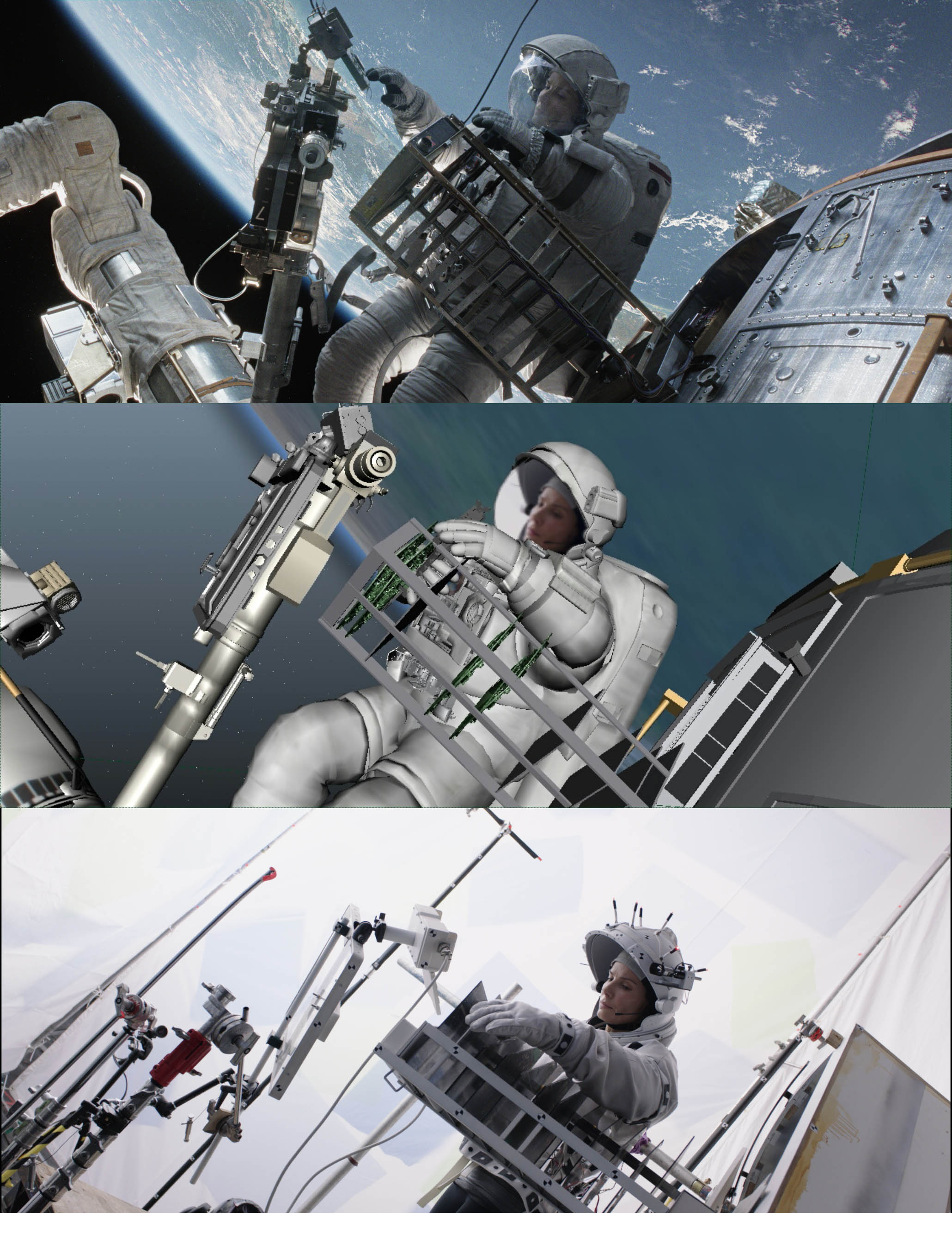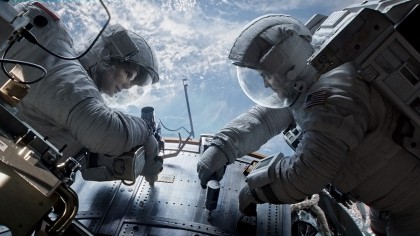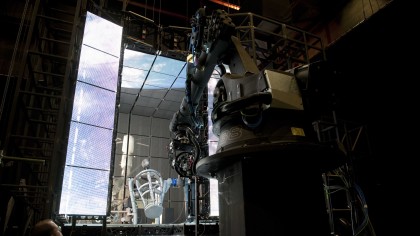Secrets of space: the Oscar-winning effects of Gravity revealed
The award-winning effects of Gravity laid bare
"We knew we couldn't move Sandra Bullock as we wanted to around the screen so we made her static - we put her in a rig," explained Wajsbrot.
"If she was actually spinning you would see the blood rushing to her face and this just doesn't happen in zero gravity. So we put the lights and cameras on to robots - the same robot arms you get in the car industry."

But there was another problem: the cameras worked well with the robots but the lighting just wasn't right.
According to Wajsbrot the lighting rig just wasn't fast enough and it couldn't go underneath the actors.
This was where solution number two came in. A 20 foot by 9 foot light box filled with 4,096 LED lights was assembled that would essentially encase the actors.
This light box could be controlled by the visual effects team and would align perfectly with the computer simulations that the actors' faces would eventually be transposed on to.
For this to truly work, however, the lighting had to work perfectly in the previs - something that would take considerable grunt from the software Framestore was using.
Sign up for breaking news, reviews, opinion, top tech deals, and more.
Rendering power
"We usually use Renderman [made by Pixar] for previs but it's a very specific language and Chivo would not understand it. It would have been hard to communicate to him how we were lighting the movie.
"So we changed to Mental Ray for pre-light [created by Nvidia] and Arnold [by Solid Angle] for the actual movie.
"This way we could speak with Chivo and Alfonzo in the same language and say 'okay, add a block of light and we can do the same for reflections'. The light in this software reacts very similarly to real-life lighting - the way it bounces off of everything."

Not only did this type of rendering take up a huge amount of computational power - it would have taken 7,500 years if just one CPU was used in this process - it was uncharted territory for the team at Framestore. The synchronicity of camera, rigging, lighting and CG was unprecedented.
"It is probably the first movie where lighting was done in this way through a render, with every model given an incredible amount of detail. It works really well, though, because it had been planned so far ahead," said Wajsbrot.
"The CG lighting and the real lighting of the faces were done so that you believe they have been shot together. Usually you shoot on green screen with no real planning on the lighting and you try and match it up but this was the reverse process. We lit the CG and used this for when we lit the actors."
Surprising CG
The result is a stunning piece of film tapestry that's works thanks to the seamless stitching of visual effects and good old-fashioned acting. But even for such an effects-laden movie, Wajsbrot believes those who watch it (and have already watched it) will be surprised just how much of it was created by computer.

"People will be surprised - for instance, all of the suits are CG in the movie. We used simulation software to model the suits to make sure they had the right wrinkles. There was a team of 40 people working on only simulations of cloth for over a year - making everything as high-res as possible," he said.
And the subtle computer graphics didn't end there.
"When people watch the movie they may think that the interior inside the ISS is a set and achieved with the actor on wires. Sandra is on wires but the whole interior is CG. For the inside we modelled more than 3,000 props."
Because the ISS has none of blackness of space - which takes far less time to render than colour - the renders for this part of the movie were a lot heavier and far more complex than the rest of the film.
Such reliance on CG did mean that that Gravity is original in another way. It is the first live-action 3D movie that isn't strictly post converted in 3D nor shot in 3D, as Wajsbrot explains: "In my opinion Gravity is not a post-converted 3D movie because 95% of the frame is CG.

"It was rendered in stereo, then we post-converted the faces with a very accurate track. It was a very precise rendition. That's why the stereo works so well because it was thought about a long time before the movie was made.
"The first time we read the script, 3D was part of the title and Alfonzo doing long shots helped with this as well. When you cut, cut, cut, it is hard to get the depth.
"The long takes are immersive and the fact it is space made the film work well in 3D."
Although the action of Gravity takes place 250km above us, its impact has had a huge effect back on earth, namely in London where Framestore is based. The numerous awards the company is getting for the effects means that the UK is finally seen as a powerhouse in the world of special effects.
"With Gravity we have showed that London can make a visual effects movie from beginning to end and do it by creating new techniques," said Wajsbrot.
"Before, London would use the tools from other companies but Gravity has changed the game. The scope of the movie meant that we had to create new technologies and a new way of making movies."
Gravity is out now on Blu-ray and Blu-ray 3D, courtesy of Warner Home Video. The movie has already become the fast-selling Blu-ray of all time, beating previous record holder Prometheus.
- 1
- 2
Current page: The SFX of Gravity: rendering space
Prev Page The SFX of Gravity: achieving the impossible
Marc Chacksfield is the Editor In Chief, Shortlist.com at DC Thomson. He started out life as a movie writer for numerous (now defunct) magazines and soon found himself online - editing a gaggle of gadget sites, including TechRadar, Digital Camera World and Tom's Guide UK. At Shortlist you'll find him mostly writing about movies and tech, so no change there then.